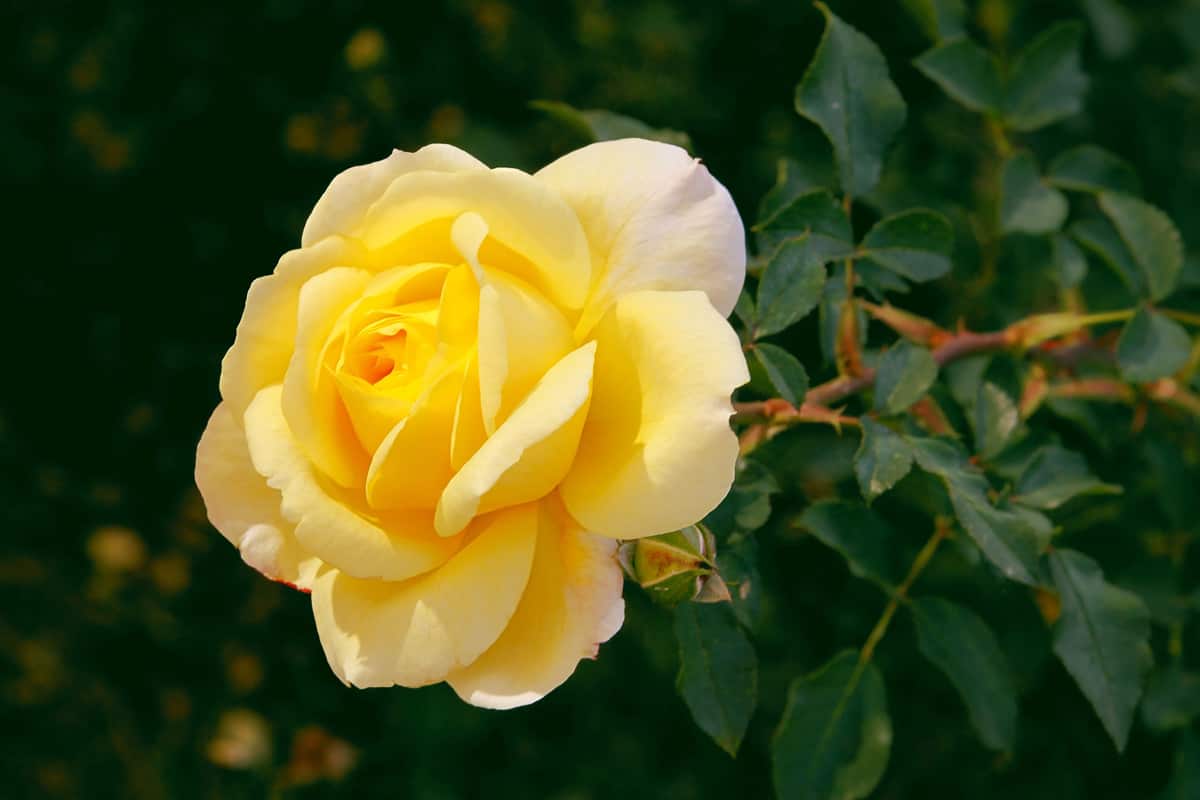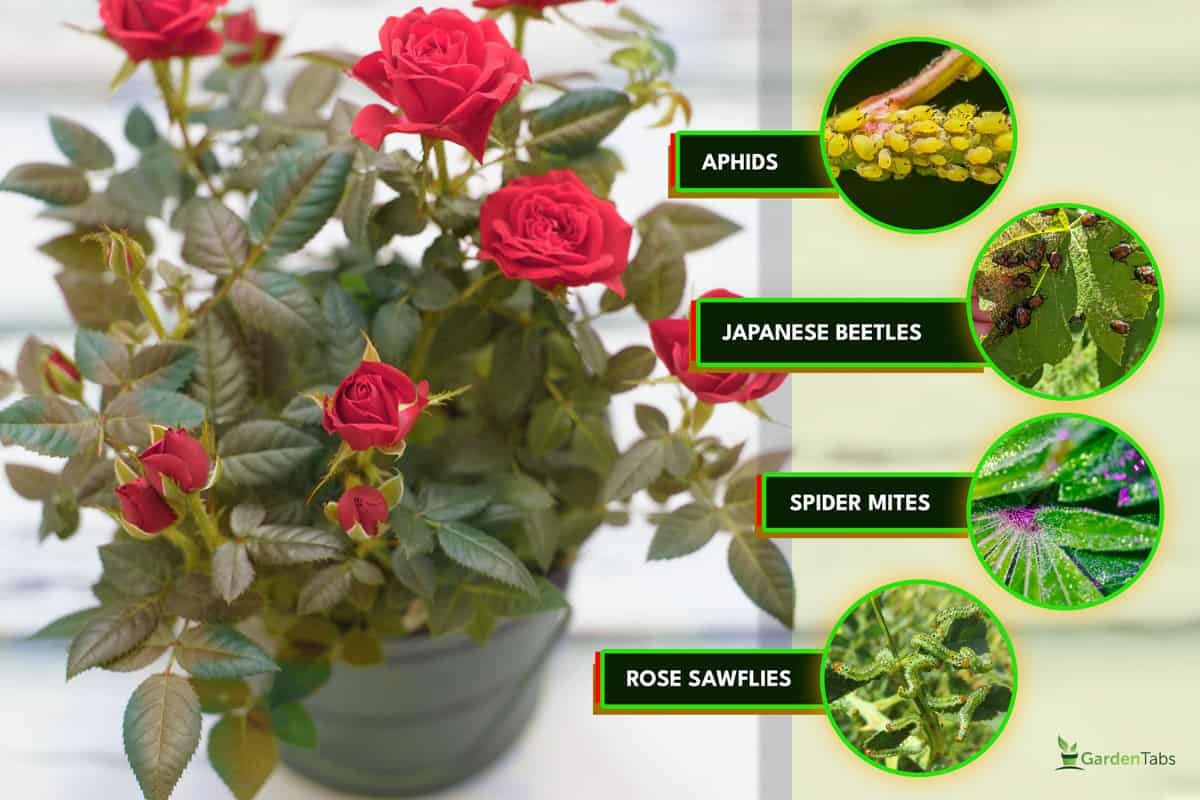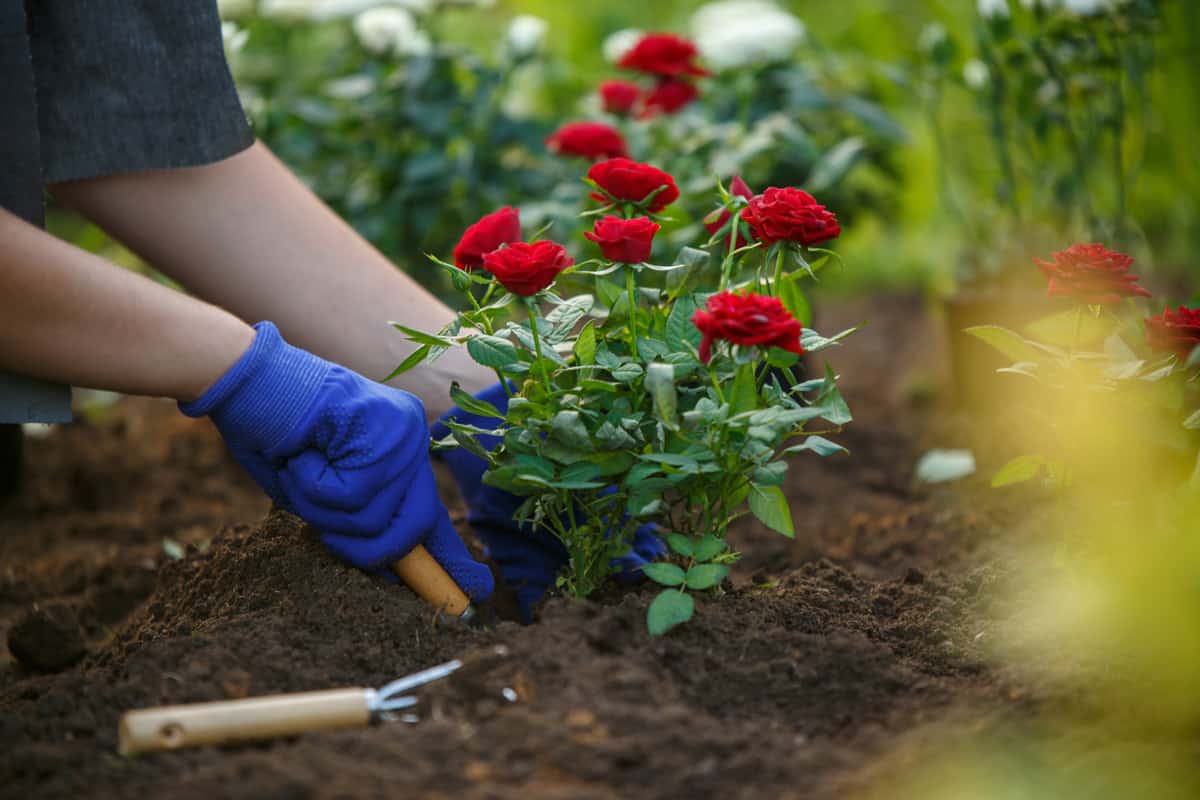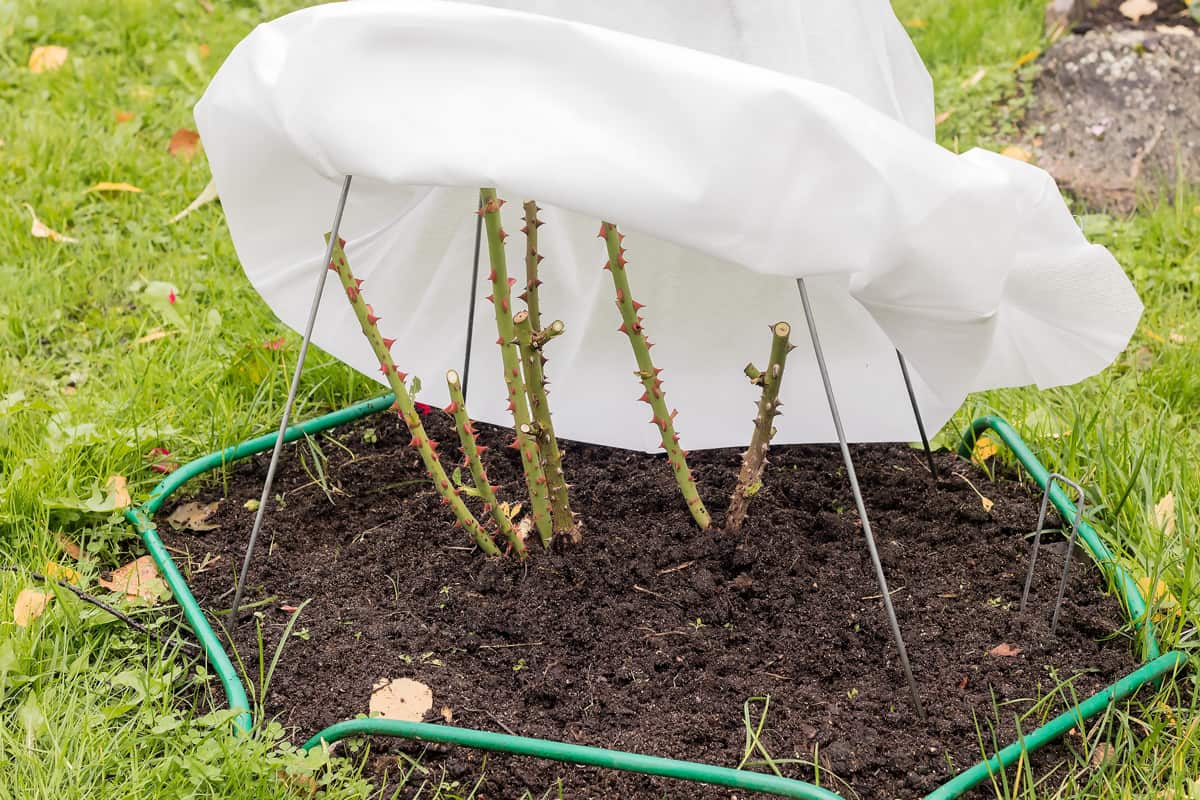Roses come in various colors, including yellow. However, it can be worrying if your roses turn yellow when they should not. This post will help you find out why your roses are turning yellow and what solutions to pursue.
A lack of nutrients is the main cause of yellowing roses. Other reasons include disease, overfertilization, overwatering, and drought stress are other causes. You will see yellowing on the top or at the base of the plant without the right conditions and care.
When you learn the causes of yellowing roses, there are ways to stop the discoloration. After restoring the colors of your roses, you must also provide the right care to avoid yellowing. Read along to return the roses to their normal colors.
What Causes Roses To Turn Yellow?

Roses are ornamental shrubs with various colors of blooms. The common colors are maroon, red, and pink. Although there are naturally yellow roses, yellowing is unusual for other rose colors.
The discoloration will tell you that there is something wrong with the roses. You must take immediate action to restore the rose color. If your roses turn yellow, it's best to nail down the causes first.
Roses will turn yellow due to the following:
- Lack of nutrients - Yellowing becomes widespread if the plant has deficiencies in key nutrients, such as nitrogen, iron, and magnesium. The plant can receive these nutrients from the right location containing the appropriate soil type and pH.
- Lack of oxygen - Without oxygen, the rose bush will turn yellow and is more vulnerable to diseases.
- Less sun exposure - Roses need 6-8 hours of full sun. Too much shade blocks the sunlight exposure of the plant. The roses will turn yellow because sunlight is essential for photosynthesis.
- Diseases - Roses are susceptible to Verticillium wilt, which causes the rose bushes to wilt. The yellowing starts from the base going up to infest the flowers. Other diseases turning the roses yellow are:
- Black spot
- Rose mosaic virus
- Rose sawflies
- Powdery mildew
- Pests - The pests that cause yellowing are spider mites, Japanese beetles, aphids, and thrips.
- Overfertilization - Too much fertilizer will burn and turn the roses yellow due to the high salt and nitrogen content.
- Overwatering - Too much water will also make the roses yellow. In effect, the roses will wilt and fall off. Moreover, make sure that the soil is properly draining. Soggy soil is not suitable for roses.
- Drought stress - If you do not water the roses during drought, they can suffer drought stress. The roses need moist soil to survive during the dry and hot seasons.
- Winter - Roses, especially the leaves, will turn yellow in the winter because the plant is dormant.
The causes affect all parts of the rose shrub, from the stem to the flower petals. If you ignore the issues, your roses will die.
After learning the causes of yellowing roses, your next step is to learn the solutions for this issue.
How Do You Fix Yellowing On Roses?

Relating to the causes above, below are some solutions to fix yellowing roses:
- If the cause is nutrient deficiency, the common solutions are as follows:
- If the soil lacks nitrogen, add nitrogen fertilizer. You can also adjust the soil by adding compost.
- If the problem is magnesium deficiency, add Epsom salt to the soil.
- For the iron requirement, use chelated soil.
- Ensure that your roses are in the right soil type and pH level. The soil for your rose garden must be loamy with a pH of 6.5. You can amend the soil to get the right consistency. Moreover, it is best to grow rose shrubs on raised beds or containers.
- If you have clay soil, amend it by adding peat moss and compost.
- Provide the roses with the right amount of water. Make some holes in the soil. Then, pour water to make the soil damp. For roses planted on containers, pour water until it drains into the holes.
- For roses struggling with too much or too little water, the remedies are the following:
- If the soil is still dry, repot the plant on moist soil.
- You can also place your plant on a pebble tray filled with water. By doing so, you can avoid root rot.
- Place the rose plant in a sunny area. For roses planted indoors, you can move the pot outside. Rotate the plant so the other side can receive sunlight. Keep the plant away from things that create shade.
- Remove excess fertilizer by washing it off with running water. You can also remove the part of the soil where there is fertilizer formation. If the two methods do not work, transfer the plant to soil with a balanced fertilizer.
- During drought, keep your roses hydrated. Add some protection against direct heat or place it in a shaded area.
Keeping Pests Away From Roses

Various pests can cause roses to yellow. The solutions will vary depending on the type of pest infecting the plant. Read about them below.
- Aphids - Spray a soap and water solution on the plant to keep these pests away. Do this for several days until there are no more pests.
- Japanese beetles - Buy a Japanese beetle killer or pyrethrin-based insecticide to spray on the plant in the first wave of attack.
- Spider mites - Use rubbing alcohol or neem oil to spray on the plant.
- Rose sawflies - Remove the larvae of the sawflies with Q-tips with isopropyl alcohol or by hand.
Dealing With Rose Diseases

Disease is another bothersome problem that can cause yellowish roses. Rose plants can get infected with fungi and viruses. The common diseases and the corresponding solutions are as follows:
- Verticillium wilt - Once infected, there is no cure for this disease. If you see that the disease is starting to affect the plants, remove the infected parts. Another effective solution is soil solarization. This method heats up the soil and kills the fungus.
- Black spot - Use fungicide containing chlorothalonil to treat infected parts. Prevent the spread of the fungus by removing the mulch around the shrub. You can also use neem oil.
- Rose mosaic virus - Sadly, there is no cure or treatment to battle this disease. You can only replace the infected roses.
- Powdery mildew - Fungicide with metalaxyl can cure this disease.
Aside from the solutions for each disease above, you should also remove the yellowed parts of the plant. Prune only the yellowed portions and avoid the healthy ones. When done properly, the roses can grow back new flowers.
For diseases with no cures, the best way to tackle the issue is through prevention.
How To Prevent The Yellowing Of Roses

Roses either require low or high maintenance, depending on the species. Old garden and shrub roses are low-maintenance, while modern and hybrid roses are high-maintenance.
When caring for your roses, follow some tips to prevent discoloration:
- Keep the plants in a sunny location, but provide some protection during the hot summer season.
- Soak and dry the rose plants when watering.
- During spring, water the plant every week. In the summer, water every 3-4 days.
- Maintain the temperature around 60-70° Fahrenheit.
- The relative humidity should be in the 60-70% range.
- Before the winter, add some mulch on the base to add insulation.
- You can repot the plant once every 2-3 years during early to late spring when it is dormant. When the rose outgrows its container, you should also repot it.
- Prune the shrubs in the early spring.
- When planting new shrubs, keep 3 feet distance away from other rose shrubs.
Although there is a lot to learn, the right maintenance can keep your roses from yellowing.
In Closing
There are various causes why roses turn yellow. If your roses are not naturally yellow, the common reasons are nutrient deficiency, lack of sun exposure, overfertilization, overwatering, pests, and diseases.
When the yellowing is widespread, you can still revive the roses' color. However, some diseases are incurable. The available solution is to cut off infected areas or replace the rose shrub.
Yet, it is best to take preventive measures to avoid discoloration. With the proper care, your roses will bloom in the right color.
To know more about roses, read these posts:
What Are The Best Planters For Roses?
11 Types Of Roses For Pots In Full Sun

